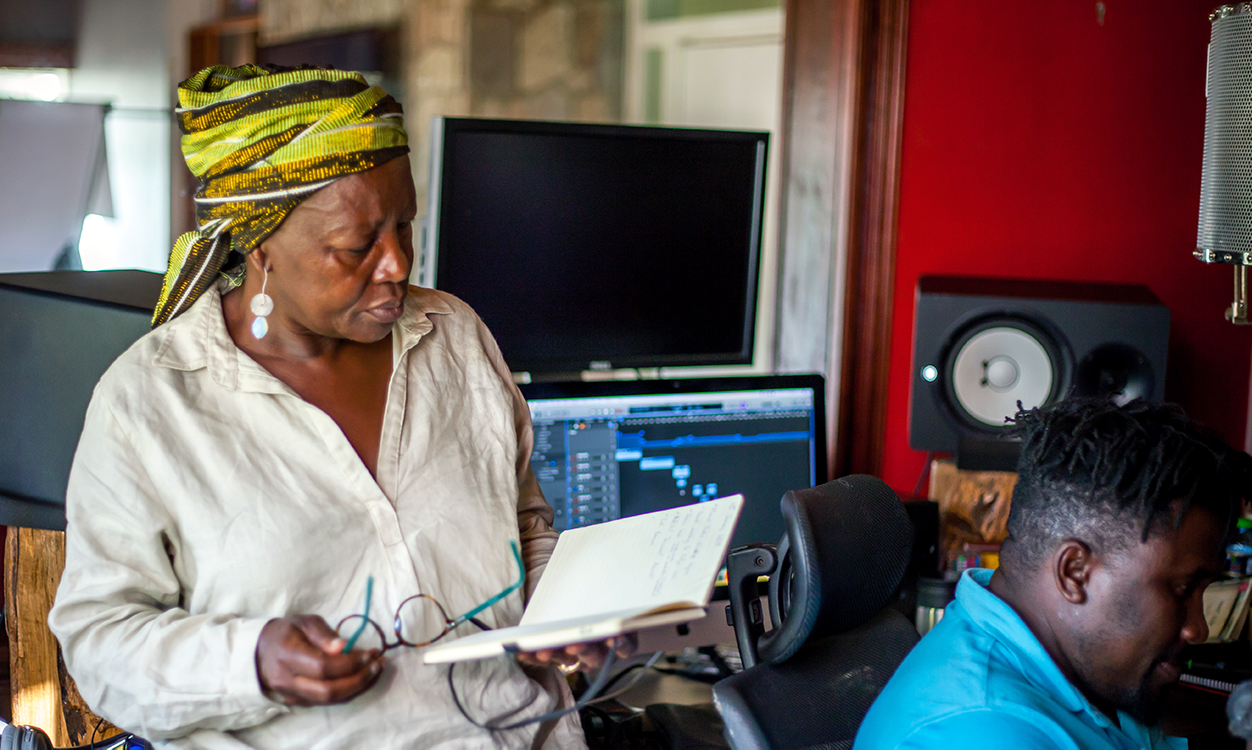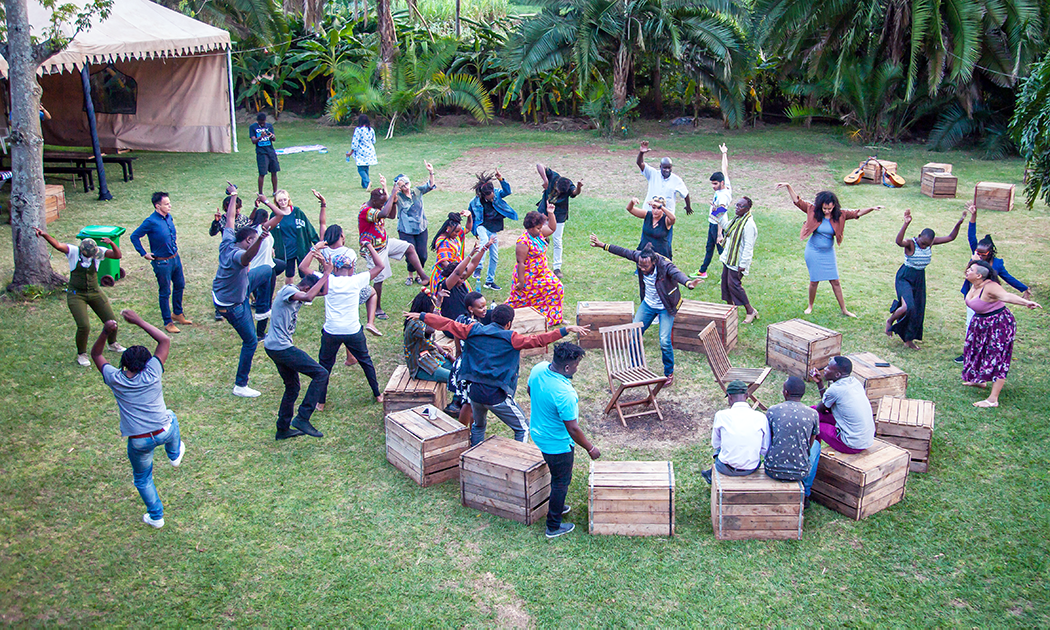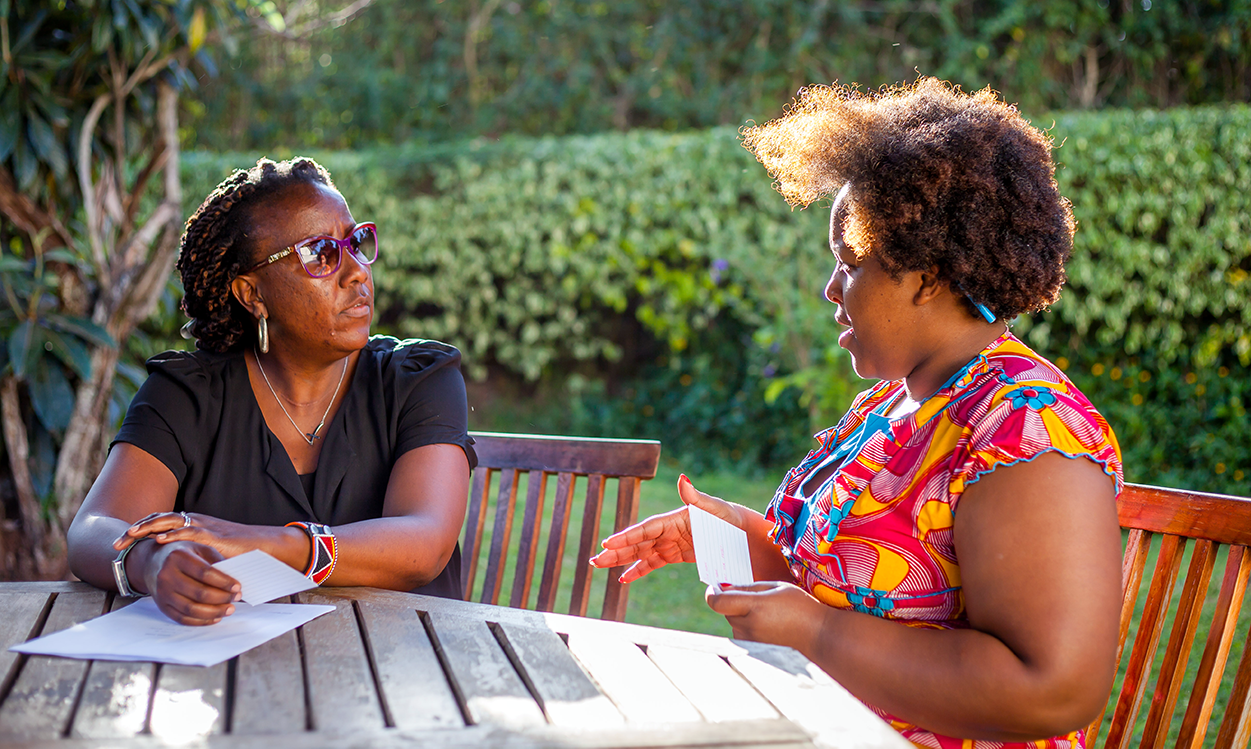Colonialism has left lasting effects on the education and cultural sectors in Kenya. The study of local languages and the arts are still given less importance than the humanities, sciences, and English. In Ngũgĩ wa Thiong’o’s book Decolonizing the Mind, Thiong’o argues that by institutionalizing the English language, colonizers shifted individuals’ way of thinking; changed ritualized theatre practice and oral literature and, instead, dictated one “right” way of making art; and forced a Western perspective with which to comprehend the world. Since independence, the arts and cultural sector has seen tremendous growth. Despite this, some questions continue to loom: How do we, the Kenyan artist community, choose to understand our place in this contemporary, independent nation? And how do we use our art to express the realities of our contemporary experience in Kenya?
A large part of embracing a new, post-colonial identity, particularly in Kenya, includes unlearning what is taught in the rote school systems, providing artists with the necessary tools and space to create their own work, and empowering them to develop stories relevant to their personal experiences and background. At present, there are multiple cultural initiatives in Nairobi, the capital city of Kenya, that seek to address the need for platforms that tell authentic Kenyan stories, such as the Too Early for Birds Collective, StoryMoja Publishers, and the Nairobi Musical Theatre Initiative (NBO MTI), where I serve as the associate producing director. These groups adopt different forms and storytelling structures that include pop culture, non-linear storytelling, and musical theatre to present a new narrative that speaks to the contemporary Kenyan experience.
In talking to leading Kenyan artists who have been part of some of these programs, and when analyzing the newly developed African dramaturgy, particularly with regards to musical theatre, it is evident that there is both a large need for a space where artists feel empowered to tell stories relevant to their own personal experience and for the work that is produced to be recognized on an international level.





Comments
The article is just the start of the conversation—we want to know what you think about this subject, too! HowlRound is a space for knowledge-sharing, and we welcome spirited, thoughtful, and on-topic dialogue. Find our full comments policy here
This article has given me a voice where I was once unable to articulate and back up my "choices" in regard to the structure of my plays. And by structure, I mean stories that came through me and were written as I saw them not in adherence to Eurocentric theatrical rules and regulations. Thanks for sharing a new perspective.
Absolutely, thank you for sharing your insights Nathan!
This is the power of African dramaturgy - it is rooted in a very different understanding of storytelling structures, and different perspectives are always helpful when developing new work!
Excellent article, Karishma! Thank you for giving us this panoramic view into your work. And the guidance manual is a wonderful tool.
Thank you Ryan! I really appreciate your kind words.
I am a big fan of the guidance manual as well - it provides a nuanced understanding into ethical collaborations in the arts.